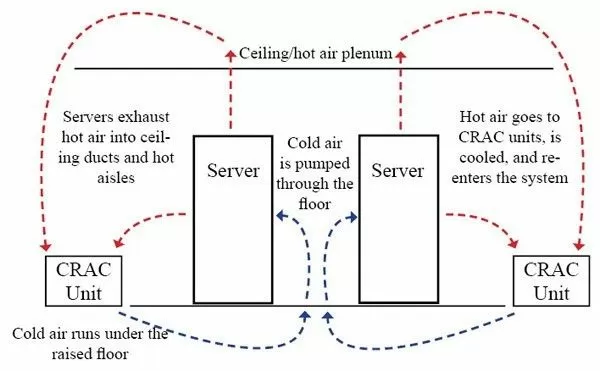Download our free Monitoring Fundamentals Tutorial.
An introduction to Monitoring Fundamentals strictly from the perspective of telecom network alarm management.
1-800-693-0351
Have a specific question? Ask our team of expert engineers and get a specific answer!
Sign up for the next DPS Factory Training!

Whether you're new to our equipment or you've used it for years, DPS factory training is the best way to get more from your monitoring.
Reserve Your Seat TodayAs you know, air flow management is one of the best and most cost-effective ways to keep the temperature of your server room or data center under control. A crucial part of any air flow management system is having the right monitoring gear to ensure your equipment doesn't go down because the air flow in your server room or data center wasn't being properly circulated.
If you're not using an air flow monitor, how do you know when the air flow in your IT environments has been interrupted? When your network goes down? When you get a phone call from an angry customer? Well, there's a better way. By using an air flow monitor, you can be the first to know the instant your equipment is at risk of an outage.
All it takes is a well placed air flow sensor in your server room or data center and you will no longer have to worry if the air is being properly circulated. Outages are expensive, so it's absolutely essential that you're taking the necessary steps to protect your network.

What does it take to protect my equipment?
Let's examine exactly what it takes to adequately protect your network. You're going to need an air flow sensor placed in your server room, so it can monitor the flow of air. Then you'll need a remote telemetry unit (RTU) that your sensor can report to. Then, depending on your personal preference, you'll need a way for this information to report back to you.
There are several ways you can achieve this. If you have a 7x24 NOC, then a great method is to use a master station and have your RTU report alarms straight to the master station in your NOC. This way your technicians will receive alerts about any disruptions in air flow by your sensors.
Or, if you're a smaller company, you can have your RTU send a notification via email, page, SMS text message, or voice alert straight to your phone. This way is better for a company that doesn't have a 7x24 NOC, but still needs the same 24/7 alert capabilities. By being able to receive 24/7 notifications, you can sleep easy at night knowing that your network is adequately protected.
Getting even more protection from the right RTU
You can achieve an even greater level of protection and control...with the right RTU. You can find many RTUs on the market, but many of them lack the critical features your network can't live without. That's why it's important for you to do your research and make the right choice.
What can the right RTU do for you? Much more than only monitor air flow. A good RTU will support many alarms and sensors, so you can monitor other critical environmental conditions. Your servers aren't just at risk of overheating - smoke, water damage, power outages, and unwanted visitors all pose a threat to your gear. A good RTU will have plenty of support for all of the critical alarms you'll need to truly protect your gear.
Are you interested in improving productivity amongst your team? If so, then you'll be glad to hear that RTUs exist that offer control relays and terminal server ports - meaning you can achieve remote access and control to your gear - even if you're hundreds of miles away.
A control relay gives you remote control over any device that be operated by a button or a switch. That means no more driving 30, 45, even 60 minutes to a distant remote site just to reboot some frozen equipment. A terminal server port allows you to connect your serial devices, so you'll be able to configure settings on your serial equipment, without driving long distances.
Finding that perfect RTU
Just think about how much productivity will improve if your technicians could spend less time driving and more time focusing on other projects. And imagine how much easier your job would be if no matter where you were, or the time of day, you could be assured that your network is adequately protected. With the right monitoring system, a preventable network emergency will never happen on your watch.
The first and most important step is making sure you have the right information to help you choose the right air flow monitor for your network. Since you're a professional, and you need a serious solution, I first recommend reading the free Server Room Monitoring Tutorial by DPS Telecom.
This free guide will help you choose the right monitoring gear. There are many options to choose from and you don't want to get stuck with a limited system. This tutorial will teach you the most important server room and data center monitoring features to look for and the most common pitfalls to avoid.
Don't leave your mission-critical equipment at risk any longer - call (1-800-693-0351) or email (sales@dpstele.com) to get in touch with the DPS monitoring experts. They can answer your questions, recommend quality monitoring solutions, or even provide you with a free ROI analysis to help you secure budget money for protecting your network.